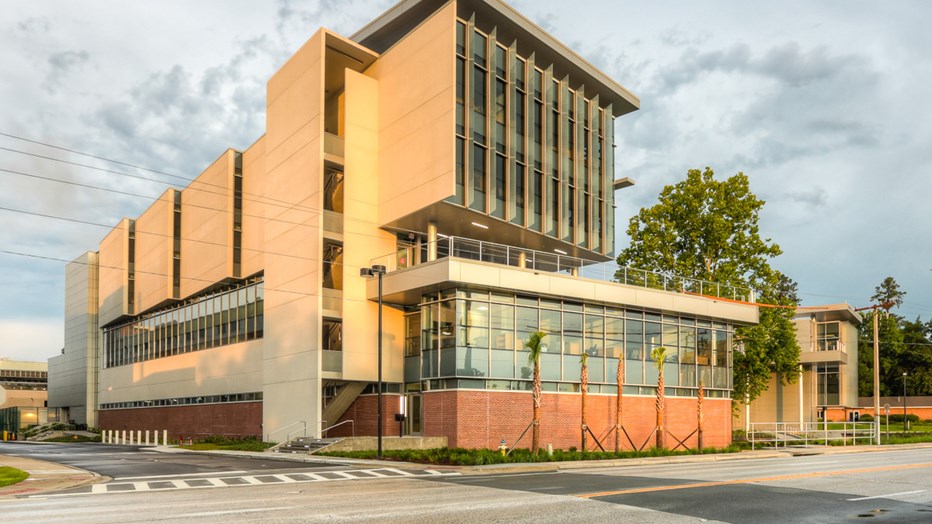The CTRB (Clinical Translation Research Building) project, built on a 2.5 acre site, is located on the University of Florida main campus. The scope of work required our team to demolish the existing buildings on site, relocate existing utilities and deliver a new 120,000-SF facility with no interruptions to ongoing operations and pedestrian/traffic flow. The building structure is made up of structural steel atop auger cast piles, pile caps and grade beams. The exterior skin consists of pre-cast architectural panels, curtain wall systems, metal wall panels and brickwork. A chilled water system, tied into the campus loop, serves as the source of cooling for the building. The remainder of the site includes a variety of hardscape materials, including colored concrete, elevated concrete walkways, generator screen walls, site lighting and seating, decorative metal fencing, and landscape improvements.
The University of Florida new Clinical Translational Research Building for the Institute of Aging consists of two wings: the Institute of Aging wing and the Clinical and Translational Science Institute wing. The facility hosts the field operations and coordination of large Phase 3 behavioral and pharmacological multicenter trials in the area of aging and disability. It serves as the home for a number of active research training programs on aging, with a primary focus on assessing the long-term effects of proposed interventions, which specifically include moderate physical exercise and health education. This facility, with funding provided by a grant from the NIH, houses primarily clinical, support, and office spaces.
Sustainable initiatives included installation of approximately 220 solar panels on the roof that provide 12% of the building’s power needs, low-emission building materials, energy reduction due to building orientation and daylighting, glazing design, under-floor displacement ventilation, and rainwater harvesting for use in flushing toilets and irrigation. The building’s envelope reacts to the force of the sun with vertical fins and/or projecting canopies. Using BIM tools such as Revit, Ecotect and Radiance, the design intent was to strike a balance between daylight use and solar heat gains. In this process, the proportions of the floorplates were studied as a response to the physical properties of light transmission. From the perimeter towards the center the building, floorplates stop growing where daylight falls below acceptable limits.






